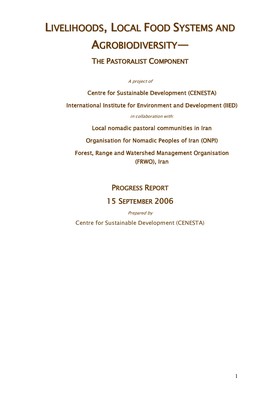Livelihoods, local food systems and agrobiodiversity -- the pastoralist component
Migratory nomadic pastoralists have lived and migrated through most of Iran since they first domesticated livestock around 10,000 years ago in the Zagros Mountains. Their lifestyles, based on seasonal migration, have been in harmony with the laws of nature. A combination of rich cultural heritage and indigenous knowledge,particularly of the local plant and animal diversity differentiates them from other social groups. However, the sedentarisation process that started in the 1920s has forced them to integrate themselves gradually in the rural and urban cultures.
This project has taken up an integrated approach to helping the tribal confederations of Iran revitalize their customary social organisations and empower them to choose their own sustaining livelihoods and agricultural biodiversity models—through a rights-based approach which has been unique in the country in its bold and innovative approaches that seem to be making great impact on national policy and the lives of the nomadic communities. The present project has concentrated on helping mobile nomadic communities to reorganize themselves in two related social and economic institutions of Councils of Elders and Community Investment Funds (sanduqs), respectively. Through innovative and flexible initiatives, the CENESTA project team tries to offer a social/economic self-management model to the local communities.
Cite this publication
Available at https://www.iied.org/g01276
